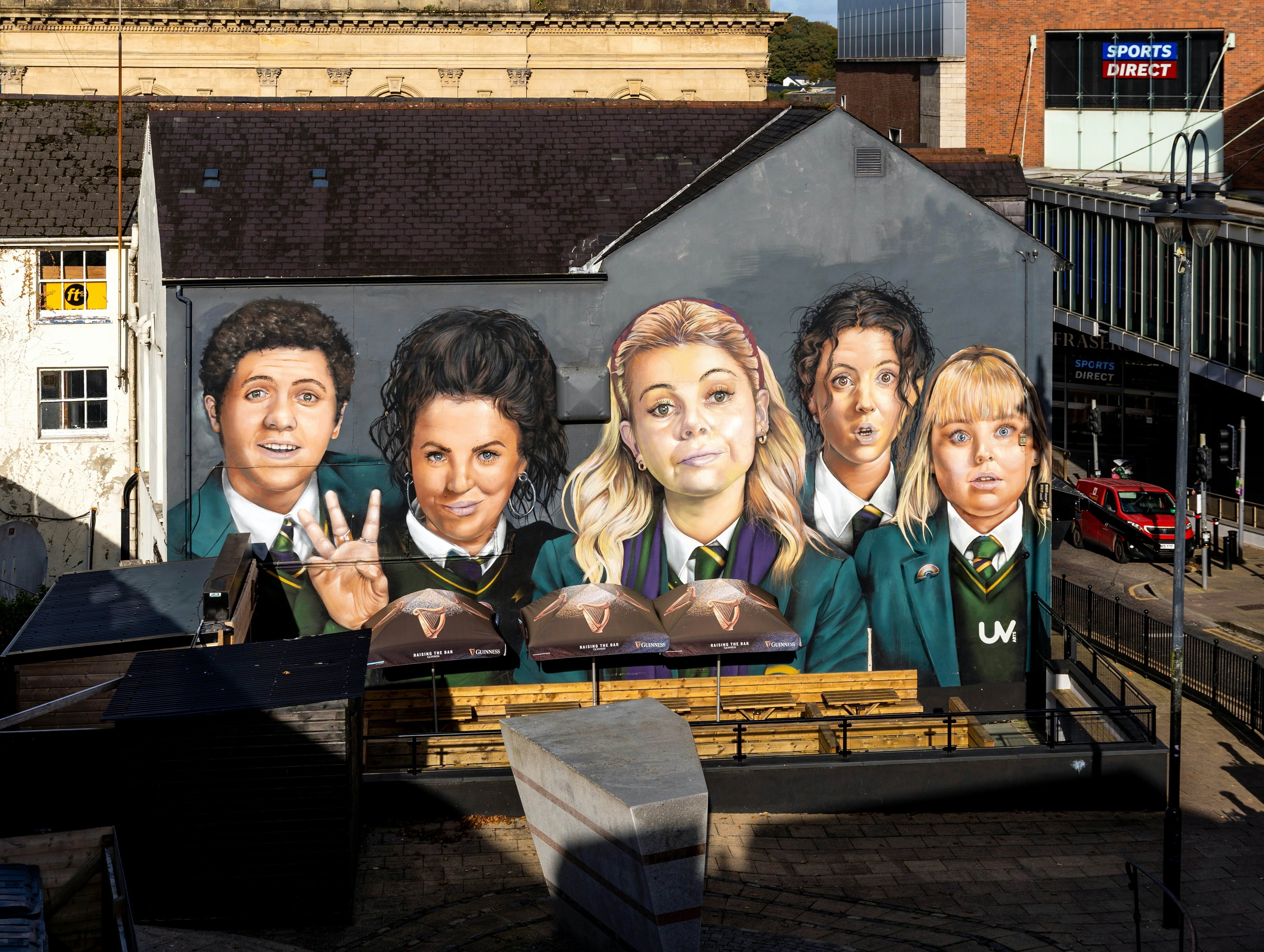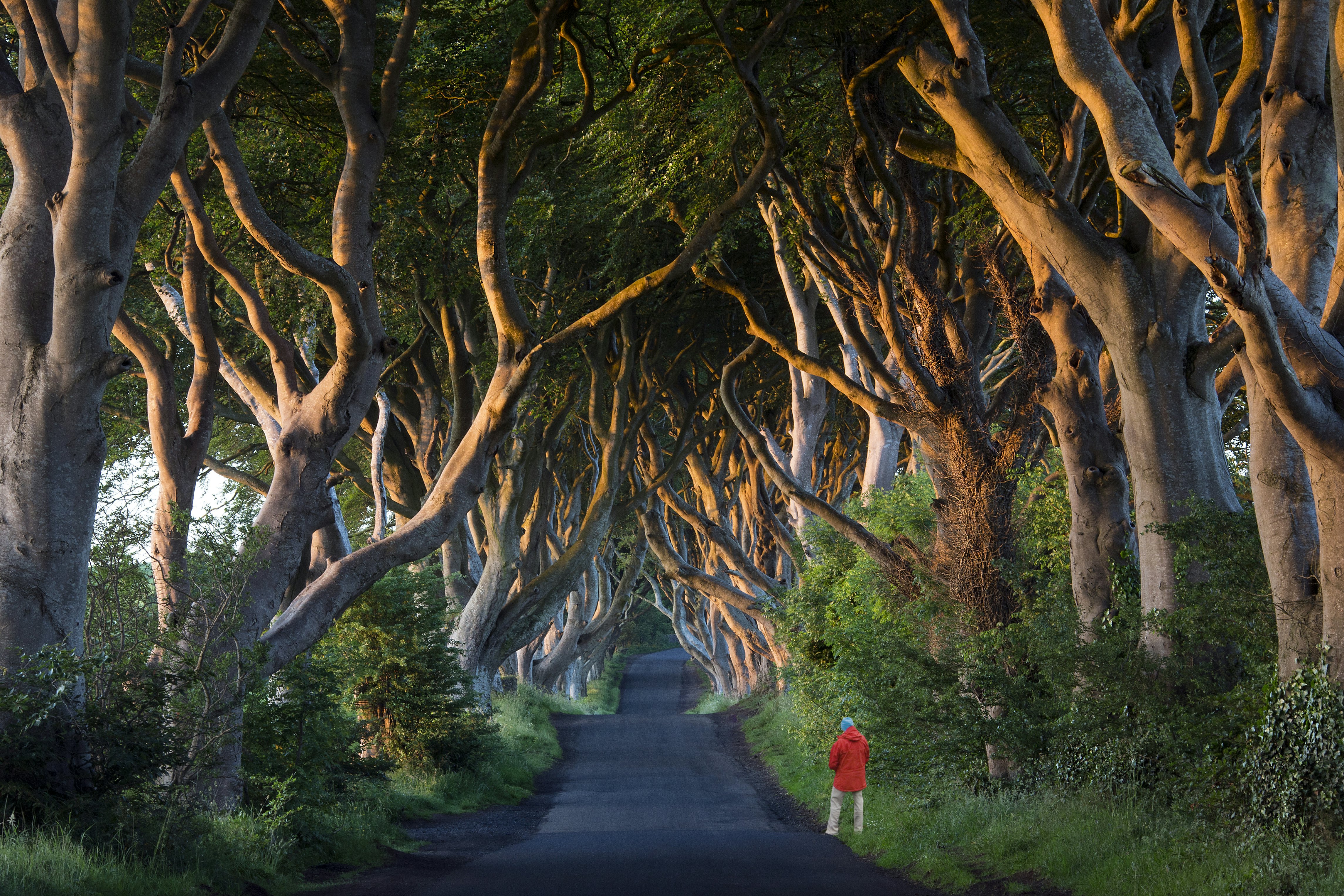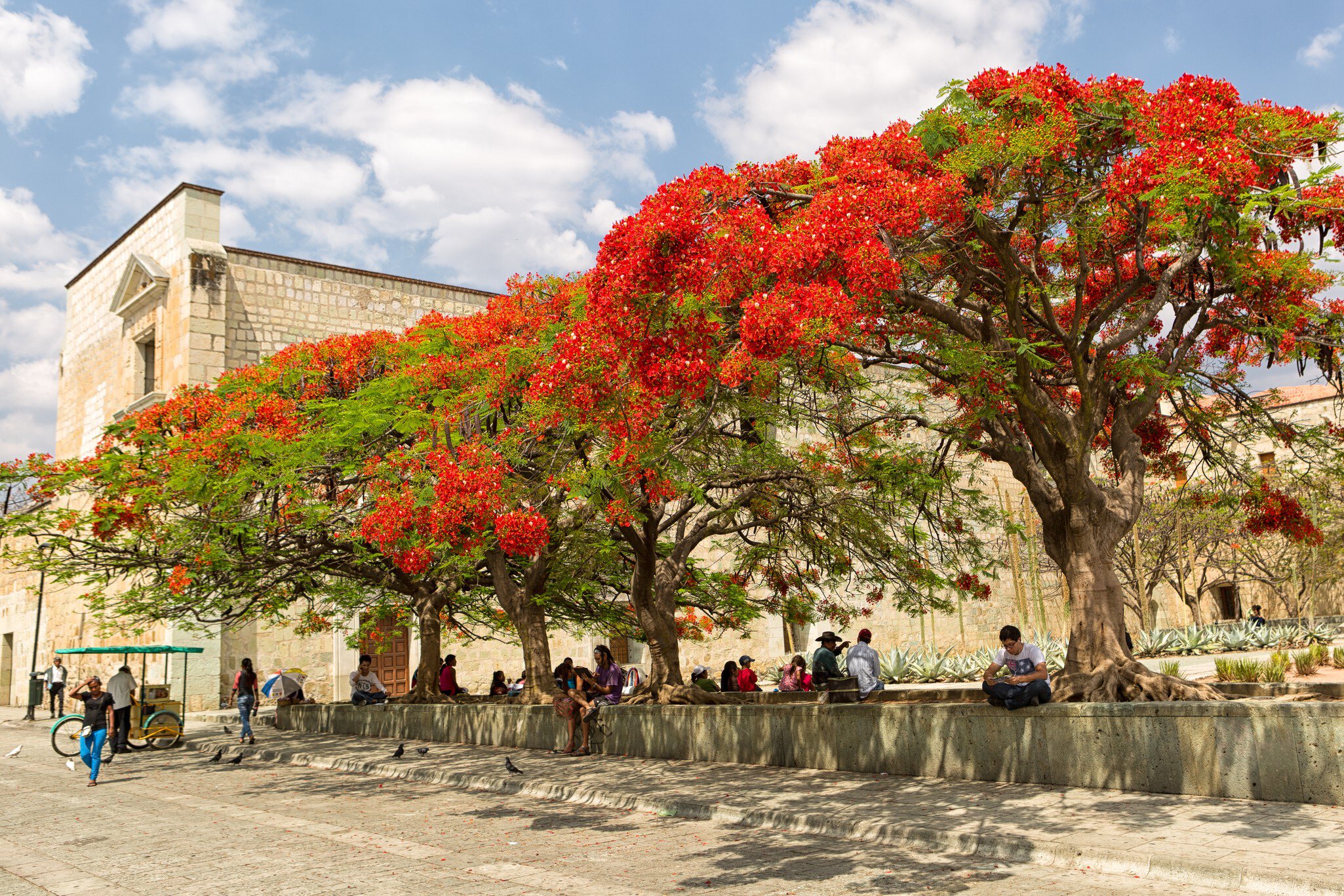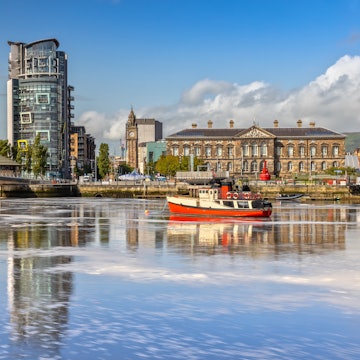

The exterior of Titanic Belfast, Northern Ireland. Nahlik/Shutterstock
The old saying in Northern Ireland goes, “What’s the craic?” These days, the answer is: plenty.
So much is happening here, in fact, that the biggest challenge you’ll have when arranging your trip is whittling down what to do, and what to leave for next time. From the peace walls of Belfast and Derry to the near-mythical Mourne Mountains and Giant’s Causeway, this is a bold and expressive country that promises both visceral history and wild landscapes.
To begin planning your ultimate itinerary, here are nine of the most memorable places to visit and things to do in Northern Ireland.

1. Embrace booming Belfast
As it has emerged from dark days to bright horizons, the Northern Irish capital keeps getting more exciting and relevant. The city is a mixture of Victorian-era pomp – cue St George’s Market, Queen’s University, the Grand Opera House and Ulster Hall – and scruffy splendor, visible in neighborhoods that were once beset by political division and sectarian violence.
West Belfast, in particular, reveals the scars from this era on its peace walls and in its painted murals. Reconciliation has long been underway, yet segregation still remains part of the national conversation. Join a guided tour of Shankill Road (Protestant/Unionist) or Falls Road (Catholic/Nationalist) to see the barriers and gates that still separate communities. Another way to feel the energy of these rebounding areas is by playing a few tracks by Irish-language rap group Kneecap.
Also synonymous with Belfast is the RMS Titanic. The world’s unluckiest ocean liner was constructed in the city’s once-booming shipyards, and the redeveloped Titanic Quarter is now a lively place of museums, statues, cafes and a whiskey distillery in a former pump house. Titanic Belfast, a showpiece museum on the site of the former shipyard where the liner took shape, has become the city’s number-one tourist attraction.
Local tip: See Belfast the way the Victorians once did: at the Crown Liquor Saloon, a beautiful pub with etched glass, carved mahogany booths and gas lamps all dating back to the 1880s.

2. Hike the Mourne Mountains
When penning his masterwork The Chronicles of Narnia, Belfast-born CS Lewis wrote about an invisible world filled with fantastic beasts and landscapes where “giants raise their heads” and “dwarves dash past.” His beloved wonderland, Narnia, was inspired by the Mourne Mountains in County Down, just one hour south of Belfast.
The landscapes of the children’s classic owe much to the Mournes’ bewitching hills and crowned granite tors, and today this prime escape is all about nature and space. The flora – bog cotton, roseroot and harebell – looks as if pulled straight from a fairy tale, and visitors will find a glut of hikes and bike trails to discover. Golden sand beaches, too.
Detour: There are other places to pick up CS Lewis’ story. The author holidayed near the village of Rostrevor – and, fittingly, there is a Narnia Trail to follow, complete with a life-size wardrobe door to walk through.

3. Puzzle over legends at the Giant’s Causeway
What must the first humans to see them have made of the 40,000-odd hexagonal columns along the north coast that make up the mind-boggling Giant’s Causeway? The sight of this vast jigsaw puzzle of 60-million-year-old basalt stacks gives the impression that time has stopped, and the exuberant layout of it all makes it one of Ireland’s most atmospheric landscapes. To make sense of the geological phenomenon – and to dispel any notions that the stones were in fact put in place by a legendary giant – visit the National Trust’s Giant’s Causeway Visitor Centre, and learn to read the rocks.
To visit the wider County Antrim coastline in a sustainable way, spend time in the communities along the 130-mile-long Causeway Coastal Route, of which the Giant’s Causeway roughly marks the halfway point. Along the way, you’ll find gorgeous fudge-sand beaches and coves; spot seals, dolphins and seabird colonies; and be tempted into taking a seagoing voyage, as St Patrick once did. Though for this go, you can opt for a kayak over a coracle.
Detour: Make a stop at Bushmills Distillery, 2.5 miles from the Causeway, for a tot of fine Irish whiskey – at least, for whoever is in the passenger seat.

4. Discover Derry
Settled by monks in the 6th century, fought over by the English, Scots and Irish for centuries and caught in a geographic wrestle with the River Foyle on the Irish border with County Donegal, Derry (or Londonderry) is nothing if not compelling.
Northern Ireland’s second-largest city has museums, art centers and a cathedral packed into a tight grid of streets within its historic gates and city walls, which feature cannon bastions and viewpoints. To the west is Bogside, where the Museum of Free Derry chronicles the history of the Northern Ireland Civil Rights Association and the city’s most notorious and tragic event: Bloody Sunday in 1972, when 13 unarmed civilians were shot dead by the British Army during a civil rights march.
As in Belfast, murals abound in Derry, with one of the most recent created on Orchard St in tribute to the acclaimed comedy series Derry Girls. Riotously funny, the series follows the lives of four schoolgirls living through the Troubles in 1990s Derry.
Detour: If coming to Derry from Belfast, stop halfway between the two cities in Nobel Prize–winning poet Seamus Heaney’s hometown of Bellaghy. HomePlace is an arts center and exhibition of mementoes that chronicle his life’s work. Nearby, make time to visit Heaney’s grave at St Mary’s Church, where his tombstone reads, “Walk on air against your better judgement.”

4. Set sail to Rathlin Island
Northern Ireland’s northernmost point, this boot-shaped speck of land in the Sea of Moyle has been celebrated by generations of Irish, and makes for a wonderful County Antrim escape. The country’s only inhabited island, Rathlin Island is home to RSPB Rathlin West Light Seabird Centre – and has far more visiting guillemots, kittiwakes, fulmars, razorbills and puffins than human residents (of whom there are a mere 140). Expect a soundtrack of squawking seabirds to match the fiddles and song at the island’s only pub, McCuaig’s Bar. Look for seals sunning on the rocks, too; biking and hiking trails lead past sea stacks and seabird colonies to two lighthouses.
Planning tip: To get to Rathlin, take the ferry from Ballycastle (25 to 40 minutes), which has a sandy beach, plus pier-side fish-and-chips. Note that only islanders are allowed to bring their cars to Rathlin, so plan on bringing a bicycle.

6. Cross the Carrick-a-Rede rope bridge
Now a favorite of tourists, the rope bridge to the little island of Carrick-a-Rede in County Antrim was an ingenious piece of design when fisherfolk first slung it over the sea 300 years ago, in order to hook migrating salmon below. The original construction has been upgraded to a sturdier 1m-wide bridge of wire rope, yet the timeless thrills remain: the bridge sways 30m above a chasm of moshing Atlantic water and can only be reached by a set of steep steps cut into the rock. Note the lonely fisherman’s cottage, painted white and empty since waning salmon stocks saw fishing here come to an abrupt end in 2002.
Planning tip: The bridge is so popular that you’ll have to book a time slot in advance via the National Trust. We recommend heading here out of peak season, when the crowds are at their thinnest and the weather at its wildest. Note that while the bridge is perfectly safe, it is not recommended for those who don’t have a head for heights.

7. Walk the Gobbins Cliff Path
Like Carrick-a-Rede, the Gobbins Cliff Path takes its cues from the wild drama of the County Antrim coast. First designed at the turn of the 20th century by Irish railway engineer Berkeley Deane Wise, who wanted to create a rip-roaring tourist attraction, the path is an ambitious walkway sculpted out of volcanic rock, complete with bridges, tunnels and elevated gantries whose sucker-punching views enthrall visitors.
A multimillion-pound investment 10 years ago upgraded the path, bringing visitors through echoing passages and wobbles along the cliff-face as well as carrying them into midair above rock pools and the plunging depths of the raging Atlantic. Located along the Causeway Coastal Route, it is a great starting point for a longer road trip – yet is only 35 minutes or so from Belfast.
Local tip: Be flexible with your planning. Because of rockfalls, storm damage and unpredictable weather, the Gobbins Cliff Path is closed as often as it is open. Due to the nature of the sunken caves and sheer cliffs, visitors with special mobility needs aren’t permitted on the path.

8. Step into a Game of Thrones episode
Northern Ireland served as something of a Hollywood backlot for the wildly popular HBO TV series Game of Thrones, with much of the award-winning program shot on location in Northern Ireland. At the film studios in Banbridge, 30 minutes south of Belfast, you can set out on the Game of Thrones Studio Tour. Here, exhibits give a behind-the-scenes view of the production, taking visitors on a journey from the conceptual stages to authentic film sets filled with costumes, weapons and props.
Further afield, Northern Ireland has an extraordinary array of set locations that doubled as Westeros. Highlights include the Dark Hedges, a ghostly boulevard of beech trees that doubled as the Kingsroad, and Ballintoy Harbour, used as Lordsport on the Iron Islands. Others include Castle Ward (Winterfell), Downhill Beach (Dragonstone) and Tollymore Forest Park (the Haunted Forest).
Detour: Fancy a few castle ruins? Northern Ireland has plenty. Favorites include Dunluce Castle, a toothy ruin 3 miles east of Portrush, and Dunseverick Castle, near the Giant's Causeway.

9. Slow down a gear in the Glens of Antrim
While Northern Ireland has no designated national parks, it does have several Areas of Outstanding Natural Beauty, including nine glens that radiate out along the northeastern coast between Ballycastle and Larne. Tucked away inside each of the Glens of Antrim are swooping roads, mare’s-tail waterfalls, rippling farmlands, woodland hiking trails to suit every age and ability, and quaint villages. (Our favorites include Cushendun, where you’ll find another GoT location, the Cushendun Caves; and Cushendall.) The highlight might be Glenariff Valley – also known as the Queen of the Glens – where a river walk leads to Ess-Na-Larach waterfall.
Local tip: Known as “the valley of the army,” Glenarm is the southernmost glen and home to Glenarm Castle & Garden, a novel-worth manor house and country estate.













